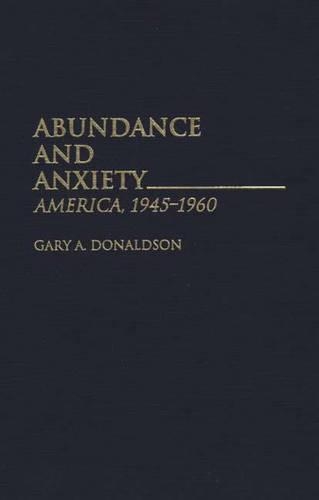
Abundance and Anxiety: America, 1945-1960
(Hardback)
Publishing Details
Abundance and Anxiety: America, 1945-1960
By (Author) Gary A. Donaldson
Bloomsbury Publishing PLC
Praeger Publishers Inc
21st May 1997
United States
Classifications
Tertiary Education
Non Fiction
Political structure and processes
973.918
Physical Properties
Hardback
208
Description
The United States had tremendous opportunities after World War II. The nation's industrial might, geared to defeat Germany and Japan, could now be focused on domestic production. Real wages were up, the GNP was on the rise, industrial production was up, and inflation was under control. The future looked bright for the average American. But this abundance was punctuated with anxiety. Within four years of the end of the war, the Soviet Union had become the new enemy: they had the bomb and China and Eastern Europe had fallen into the Soviet sphere of influence. These two points, the abundance of the growing economy and the anxiety of the Cold War, defined the period from 1945-1960.
Author Bio
GARY A. DONALDSON is Associate Professor of History at Xavier University in New Orleans. In 1991 he spent a year as a Fulbright Scholar in the People's Republic of China. He is the author of America at War Since 1945: U.S. Involvement in Korea, Vietnam, and the Gulf War (Praeger, 1996), and A History of African Americans in the Military (1991).
